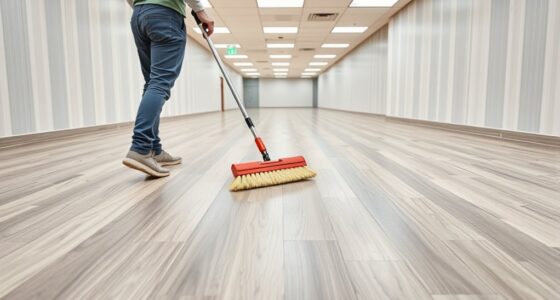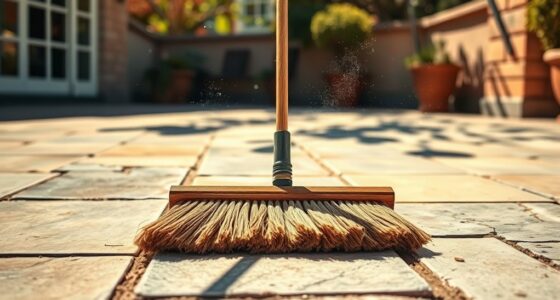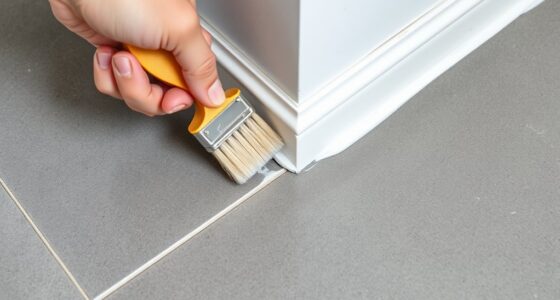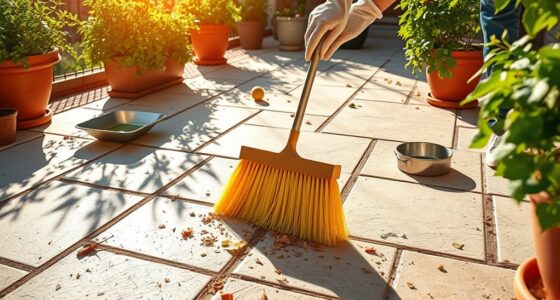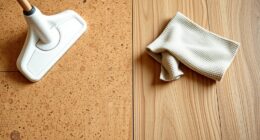To keep your shop aisles clean and your sweeper running smoothly, spend 10 minutes on a weekly checklist. Empty and check your dust bin, clean or replace filters, inspect brushes or rollers for wear, examine hoses and connections for leaks or blockages, and lubricate moving parts if needed. Regular maintenance boosts performance and extends your equipment’s lifespan. Stay with us to discover additional tips that make shop aisle cleaning even easier.
Key Takeaways
- Regularly inspect and empty dust bins to prevent suction loss and motor strain.
- Check and clean filters to maintain airflow and improve air quality.
- Remove debris and assess brushes or rollers for wear; replace if damaged.
- Examine hoses and connections for cracks, leaks, or blockages; secure all fittings.
- Lubricate moving parts according to manufacturer guidelines to ensure smooth operation.
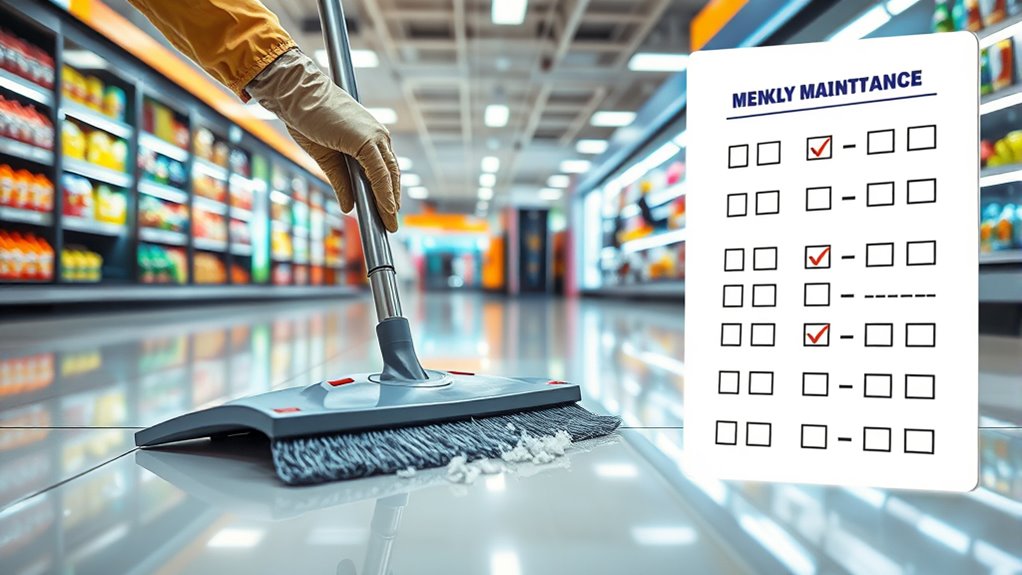
Have you ever wondered how to keep your sweeper running smoothly for years to come? The key lies in regular, focused maintenance, especially during your weekly check. A quick 10-minute routine can prevent costly breakdowns and ensure your shop aisles stay clean and safe. One of the most critical aspects of this routine is dust collection. Over time, dust and debris can clog your sweeper’s system, reducing its efficiency and potentially damaging its components. To prevent this, start by inspecting the dust collection bin or bag. Empty it before it becomes full, as overfilled containers can cause suction loss and strain the motor. When you do this, check for any signs of damage or leaks, and replace or repair parts as needed. Keeping your dust collection system clean and functioning properly boosts suction power and prolongs the lifespan of your sweeper. Additionally, ensuring your system maintains proper airflow is essential for optimal performance and energy efficiency.
Next, focus on filter maintenance. The filters play a crucial role in trapping dirt and dust particles, preventing them from recirculating into the air or damaging internal components. During your weekly check, remove the filters and inspect them closely. If they appear clogged, dusty, or coated with debris, it’s time to clean or replace them. Many filters can be cleaned with compressed air or washed with water—just make sure they’re completely dry before reinstalling. Proper filter maintenance ensures ideal airflow, reduces strain on the motor, and keeps the environment healthier by maintaining good air quality. Neglecting this step can lead to reduced suction, increased energy consumption, and more frequent repairs down the line.
In addition to dust collection and filter checks, take a moment to examine the brush or roller. Remove any tangled debris or worn bristles that might hinder cleaning performance. Check the hoses and connections for cracks or blockages, ensuring no obstructions impede airflow. Also, lubricate moving parts if needed, following the manufacturer’s recommendations. These simple steps help your sweeper operate quietly and efficiently, saving you time and effort in the long run.
Frequently Asked Questions
How Often Should the Sweeper Be Serviced Beyond Weekly Checks?
You should schedule servicing for your sweeper based on usage and manufacturer guidelines, typically every 3 to 6 months. During this time, check for parts replacement and other maintenance needs. Regular scheduled servicing helps guarantee peak performance, prevents breakdowns, and extends the equipment’s lifespan. Keep an eye on wear and tear, and don’t delay parts replacement to avoid costly repairs and downtime.
What Safety Precautions Are Necessary During Sweeper Maintenance?
Think of safety gear as your armor in the battlefield of maintenance. Always wear gloves, safety glasses, and steel-toed boots to protect yourself. Be aware of hazards like sharp blades or leaking fluids, and verify the sweeper is turned off and unplugged before working on it. Keep the area well-ventilated, and never bypass safety features. Staying alert helps you avoid accidents and keeps your maintenance routine smooth sailing.
Can I Perform Repairs on the Sweeper Myself?
Yes, you can perform DIY repairs on the sweeper if you’re comfortable with troubleshooting tips and have the right tools. Start by identifying the issue, then consult the user manual for guidance. Always turn off the machine and disconnect it from power before working on it. Remember, for complex repairs, it’s best to seek professional help to avoid causing further damage or risking safety.
Which Cleaning Products Are Compatible With the Sweeper?
Think of your sweeper as a finely tuned instrument. To keep it playing smoothly, use cleaning products compatible with its materials—usually mild detergents or manufacturer-recommended maintenance products. Always check the labels for cleaning product compatibility to avoid damage. Proper maintenance product selection guarantees your sweeper stays in top shape, preventing buildup and extending its lifespan. When in doubt, consult your sweeper’s manual for the safest, most effective options.
How Do I Troubleshoot Common Sweeper Malfunctions?
When troubleshooting your sweeper, start by checking the filter replacement to make certain it’s clean and properly installed, which can prevent malfunctions. If the sweeper isn’t running, perform battery troubleshooting by inspecting the battery connections, charging it fully, and looking for signs of wear or damage. Regular maintenance like replacing filters and checking the battery can resolve most common issues and keep your sweeper operating smoothly.
Conclusion
So, after all that effort, you might think your shop aisles are spotless for good. But don’t be fooled—neglect just a week’s worth of sweeping, and those aisles quickly forget your dedication. It’s almost ironic how a simple 10-minute checklist can make such a difference, yet many overlook it. Keep up the routine, and you’ll enjoy pristine aisles—proof that a little care truly goes a long way, even if no one notices until it’s too late.


